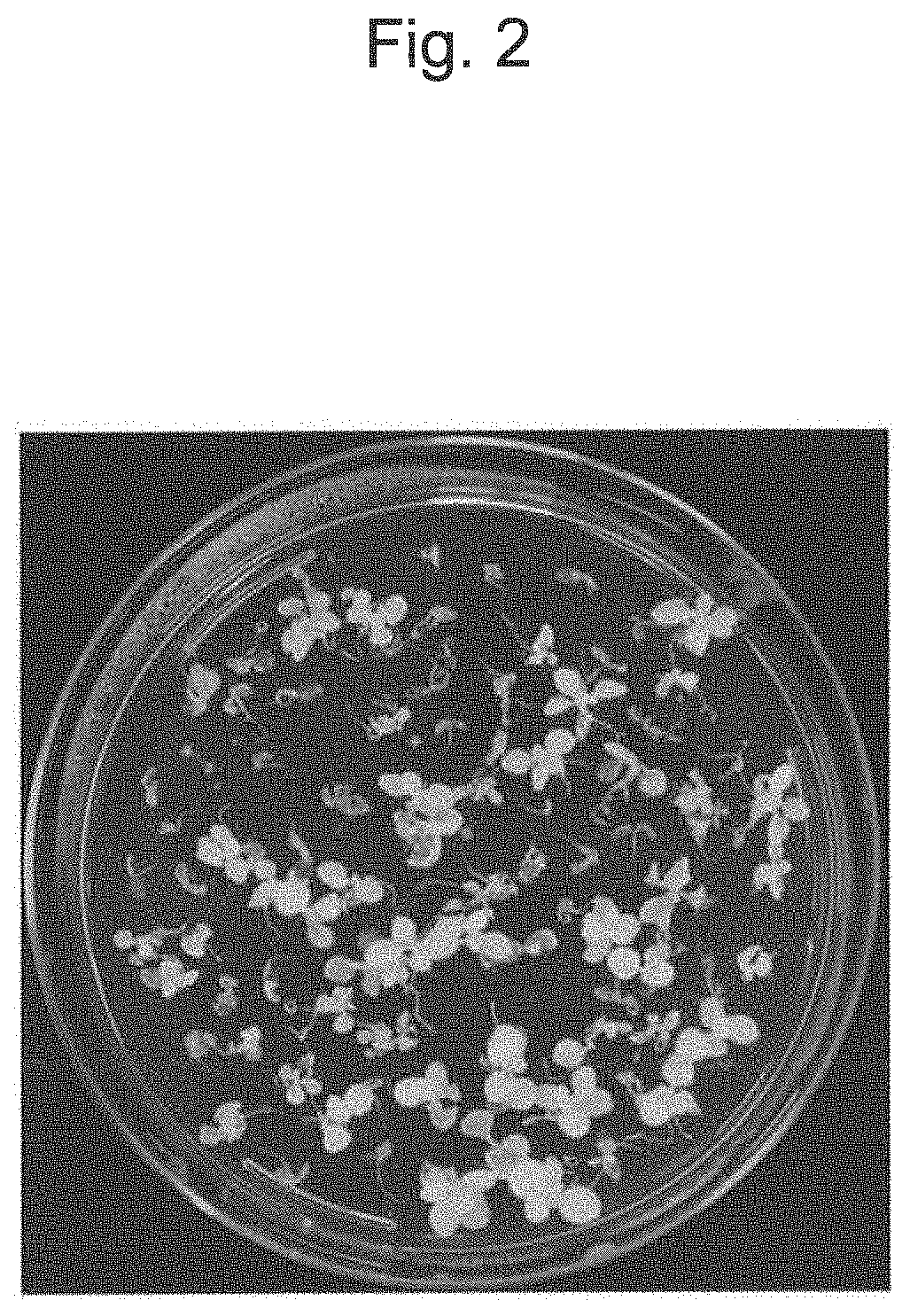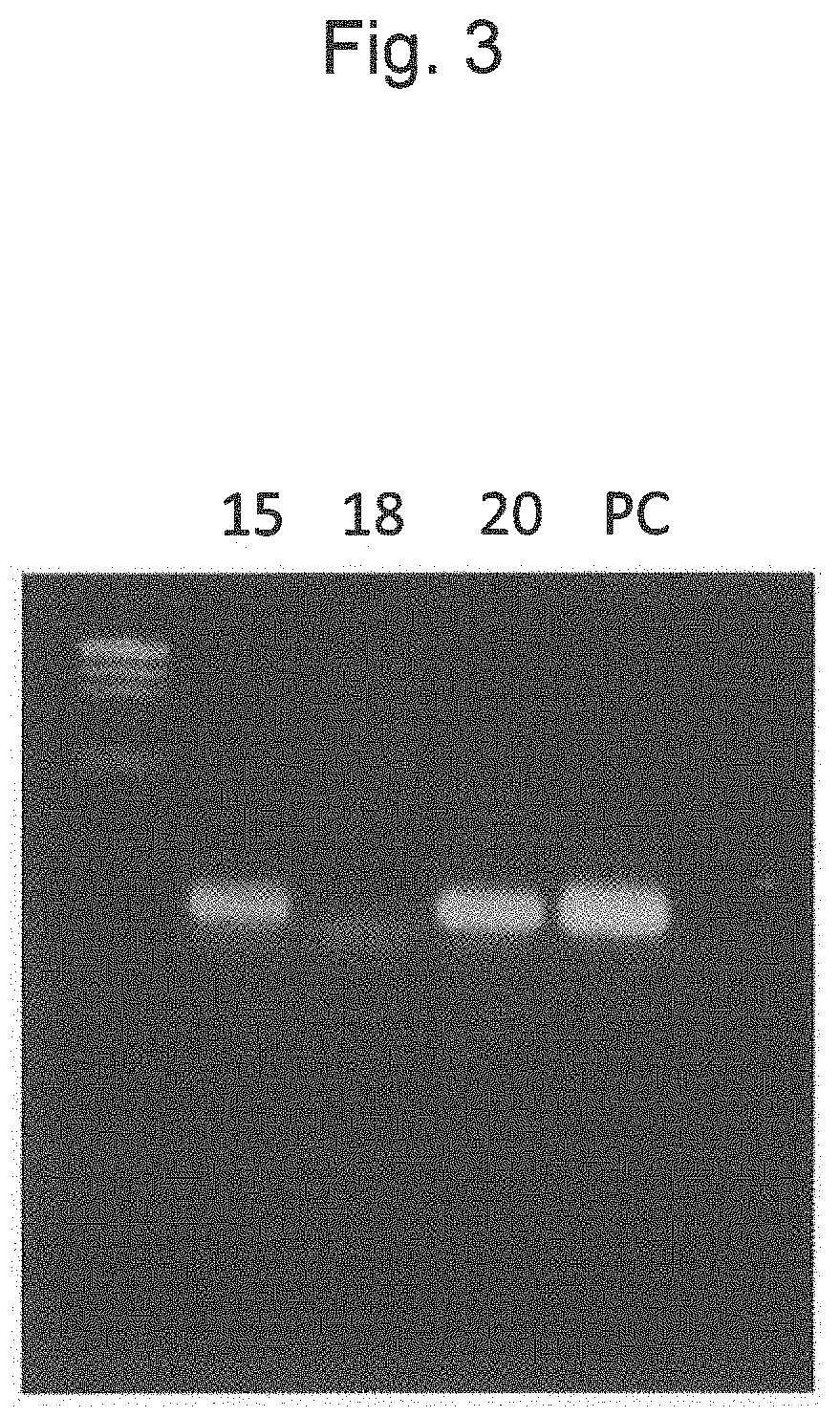Plant transformation method
a plant and plant technology, applied in the field of plant transformation methods, can solve the problems of not being able to carry out many crops, not being able to establish or achieve many crops, and the approach of tissue culture has not been established
- Summary
- Abstract
- Description
- Claims
- Application Information
AI Technical Summary
Benefits of technology
Problems solved by technology
Method used
Image
Examples
example 1
Synthesis of Carrier Peptide
[0074]As a carrier peptide comprising a cell-penetrating sequence and a polycation sequence, (KH)9—BP100 (khkhkhkhkhkhkhkhkhKKLFKKILKYL (SEQ ID NO: 30), theoretical pI / Mw: 10.81 / 3809.71 Da) was synthesized by use of standard 9-fluorenylmethoxycarbonyl (Fmoc) solid-phase peptide synthesis (G. B. Fields and R. L. Noble, Int J Pept Protein Res 35 (3), 161 (1990)).
[0075]In the sequence, the amino acid sequence indicated by the lower-case letters refers to the polycation sequence. The polypeptide was purified by use of high-performance liquid chromatography (HPLC). Then, the molecular weight was confirmed by matrix-assisted laser desorption / ionization time-of-flight (MALDI-TOF) mass spectrometry.
[0076]In the same way as above, each of a carrier peptide comprising a polycation sequence and a chloroplast transit sequence (khkhkhkhkhkhkhkhkhMAMQAMFAFQYLLVM (SEQ ID NO: 33)), and a carrier peptide comprising a mitochondrial transit sequence and a polycation sequenc...
example 2
Preparation of Carrier Peptide-DNA Complex
[0077]pBI121 (accession No. AF485783), which is a plasmid containing a kanamycin resistance gene for expression in plants, was linearized (14 Kb) by Inverse PCR and transferred as a foreign nucleic acid. The peptide-DNA complex was prepared by mixing the DNA (1 μg / μL) and the carrier peptide (KH)9(SEQ ID NO: 22)-BP100 (1 μg / μL) synthesized in Example 1 at a ratio of 3:1 in a deionized water solution at room temperature. The N / P ratio was adjusted to 0.5. In this context, the N / P ratio refers to the number of an amine group derived from the carrier peptide / the number of a phosphate group derived from the DNA.
example 3
Transformation—(1)
[0078]Nicotiana benthamiana, which is tobacco for research, was used as a plant to be transformed. The growth was performed in a phytotron whose inside temperature was set to 30° C., and the light environment was set to a continuous light. The germination was performed on an MS agar medium having half the normal concentration (0.5×MS medium, pH=5.7, containing no sucrose and vitamins). The sterile inoculation of Nicotiana benthamiana was carried out by treating the seeds with 70% EtOH, then sterilizing the seeds with 10% bleach for 30 minutes, then rinsing the seeds with sterile water three times, and inoculating the seeds to the medium.
[0079]8 μL of the peptide-DNA complex prepared in Example 2 was diluted (in a 1.5 mL, tube) with 192 μL of sterile water, and seedlings (50 individuals) 3 days after the germination of Nicotiana benthamiana were dipped in the diluted solution. The tube containing them was placed in a 50 mL syringe and kept for 1 minute in a state wh...
PUM
| Property | Measurement | Unit |
|---|---|---|
| concentration | aaaaa | aaaaa |
| concentration | aaaaa | aaaaa |
| concentration | aaaaa | aaaaa |
Abstract
Description
Claims
Application Information
 Login to View More
Login to View More - R&D
- Intellectual Property
- Life Sciences
- Materials
- Tech Scout
- Unparalleled Data Quality
- Higher Quality Content
- 60% Fewer Hallucinations
Browse by: Latest US Patents, China's latest patents, Technical Efficacy Thesaurus, Application Domain, Technology Topic, Popular Technical Reports.
© 2025 PatSnap. All rights reserved.Legal|Privacy policy|Modern Slavery Act Transparency Statement|Sitemap|About US| Contact US: help@patsnap.com



